The auto industry’s biggest names bring fresh designs and bold tech to their 2025 lineups, pushing boundaries from sports cars to family SUVs. Chevrolet stirs up attention by transforming the Corvette into an electric SUV, while Genesis polishes its luxury credentials with an upgraded GV80. Electric power takes center stage – Porsche boosts the Taycan’s performance, Hyundai reimagines family travels with the Ioniq 7, and Honda bets on hydrogen with a fuel-cell CR-V. Even icons get modern twists, with Toyota reviving the MR2 as a hybrid sports car. We’re looking at 10 incredible vehicles that show where automaking is headed in 2025.
10. Genesis GV80: A Luxurious Upgrade (Exterior)
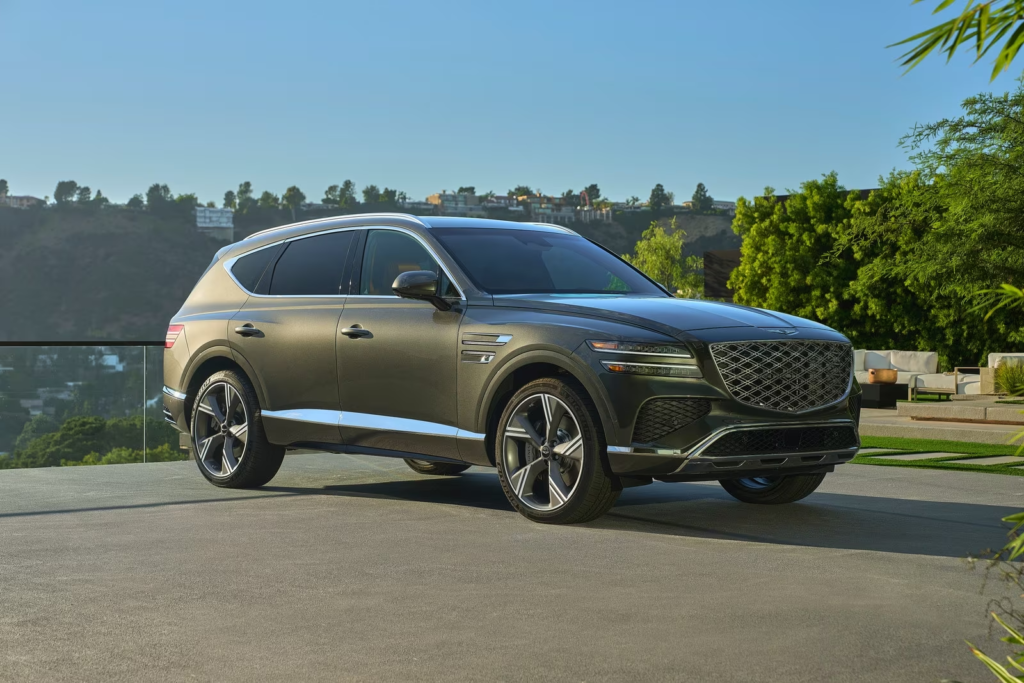
Genesis redesigns their flagship SUV for 2025 with advanced driver assistance features and an updated 3.5-liter twin-turbocharged V6 engine producing 400 horsepower. The new Genesis GV80 introduces an air suspension system with predictive road scanning technology that adjusts damping force 500 times per second based on road conditions. Genesis developed a new 14.5-inch curved OLED display featuring augmented reality navigation and gesture control capabilities. The interior receives an upgrade with higher-grade Nappa leather, open-pore wood trim, and a 27-speaker Bang & Olufsen audio system that creates individual sound zones for each passenger.
Genesis GV80 (Interior)
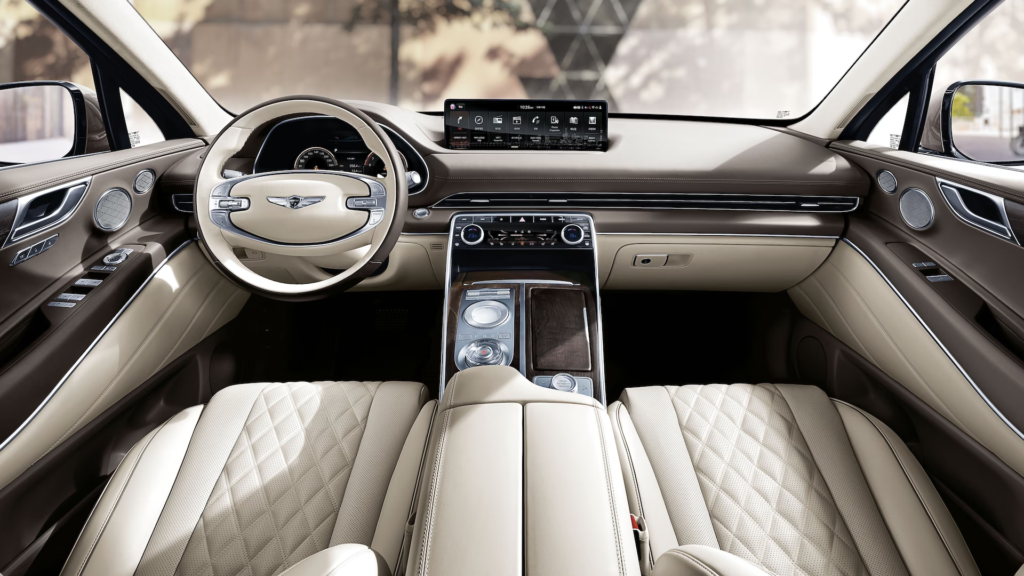
Genesis transforms the GV80’s cabin with a sustainable luxury approach, combining recycled materials with traditional premium finishes. The centerpiece includes a curved 27-inch display that seamlessly integrates the digital instrument cluster and infotainment system, featuring haptic feedback controls built into the dash surface. Genesis developed new ergonomic seats with 22-way power adjustment and a massage function that adapts to individual body types using pressure mapping technology. The ambient lighting system works with the vehicle’s advanced driver assistance features, using subtle color changes to alert drivers to potential hazards while maintaining the cabin’s serene atmosphere.
9. Honda CR-V Fuel Cell: A Hydrogen Revolution (Exterior)
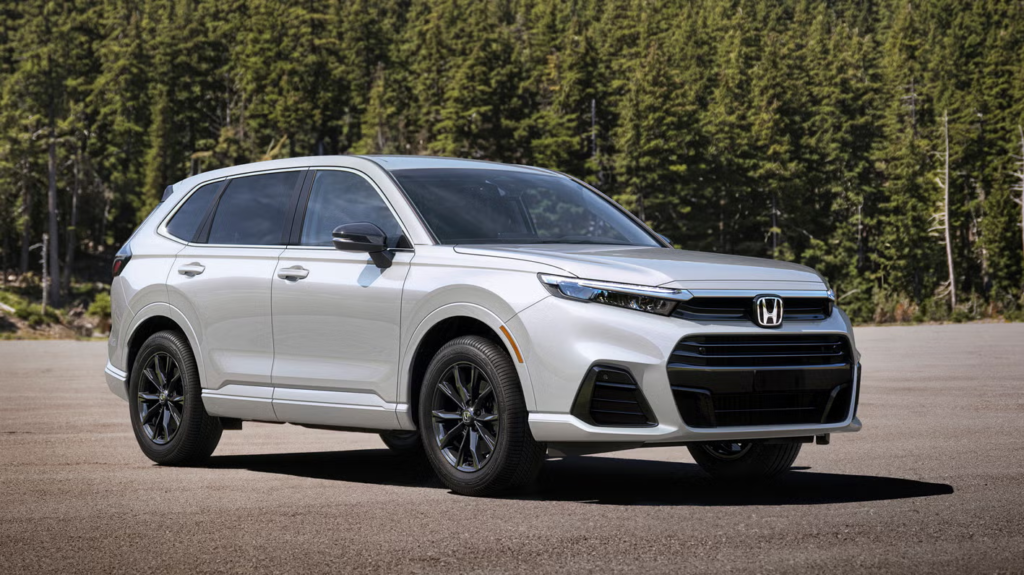
Honda enters the hydrogen vehicle market with the CR-V Fuel Cell, featuring a next-generation fuel cell stack that provides 400 miles of range while enabling refueling in under five minutes. The fuel cell system pairs with a small lithium-ion battery pack, allowing for brief periods of pure electric driving and improved low-speed efficiency. Honda engineers developed a new compact fuel cell stack that fits under the hood without compromising cargo space or passenger room. The CR-V Fuel Cell maintains Honda’s reputation for reliability while introducing advanced features like bi-directional charging capability and an emergency power output system for home backup power.
Honda CR-V Fuel Cell (Interior)
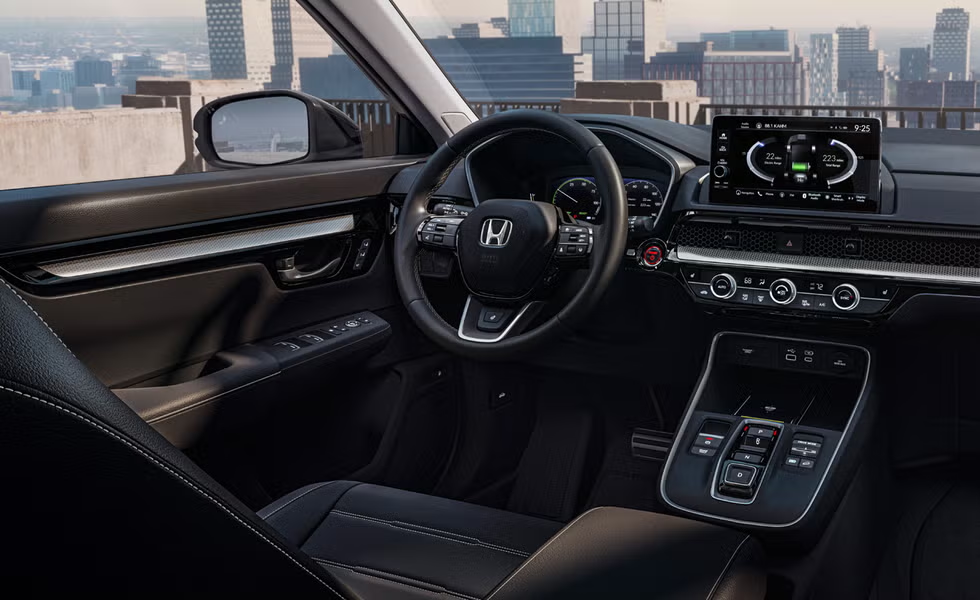
Honda reimagines the CR-V’s interior with a focus on sustainable materials and innovative storage solutions unique to fuel cell architecture. A dual-screen setup includes a 12.3-inch digital instrument panel and a 14.6-inch touchscreen featuring a dedicated hydrogen consumption monitor and range optimization tools. The center console incorporates a removable wireless charging pad that doubles as a portable power bank, while hidden storage compartments maximize interior space efficiency. Honda’s new interior air purification system uses the fuel cell’s water vapor byproduct to maintain optimal cabin humidity levels.
8. Jeep Wagoneer S: Electrifying Off-Roading (Exterior)
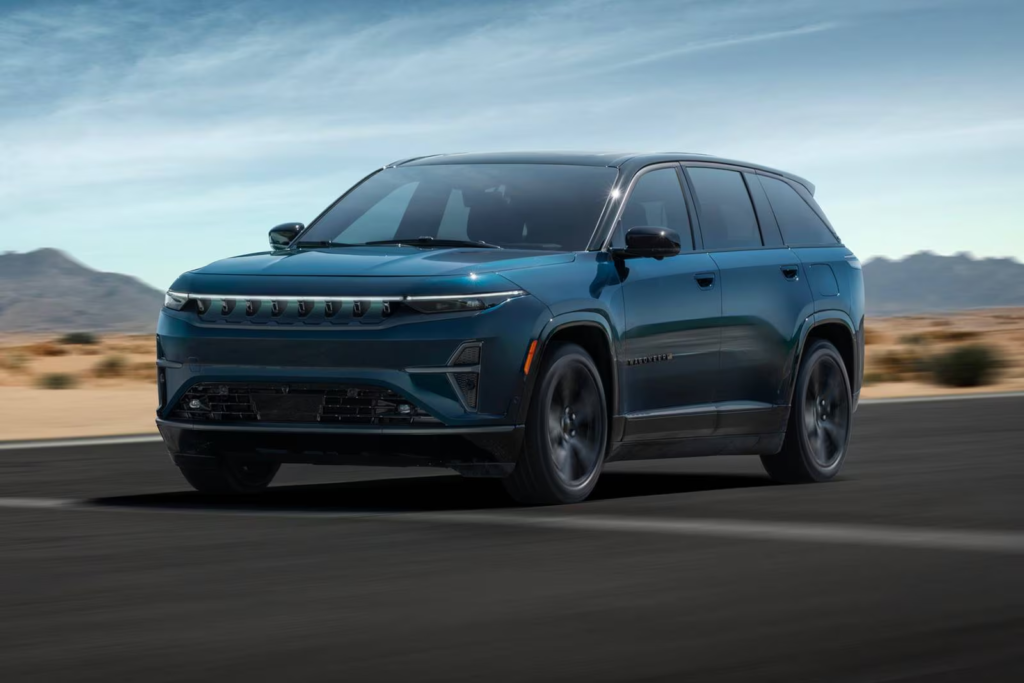
The all-electric Wagoneer S demonstrates Jeep’s commitment to sustainable off-road capability with dual motors producing 600 horsepower and a range exceeding 400 miles. Jeep developed a new adaptive air suspension system that provides up to 13 inches of ground clearance while automatically adjusting to terrain conditions. The Wagoneer S features specialized off-road driving modes that optimize torque distribution, suspension settings, and regenerative braking for different terrain types. Advanced thermal management systems protect the battery pack during extreme off-road use while enabling DC fast charging from 10% to 80% in under 25 minutes.
Jeep Wagoneer S (Interior)
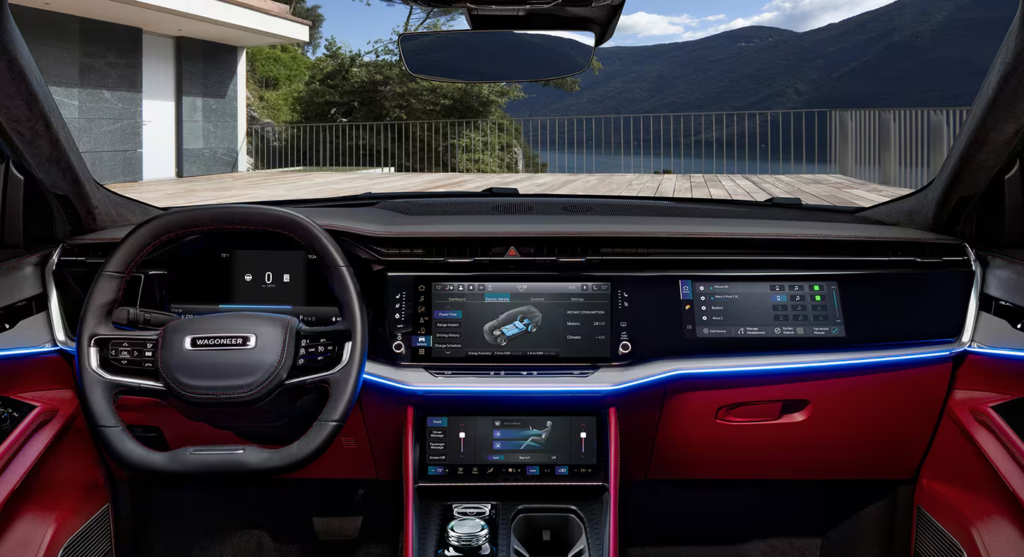
The Wagoneer S interior combines traditional Jeep ruggedness with modern luxury through materials like weather-resistant leather and recycled fabric trim. Jeep engineers developed a unique front console design featuring a rotary terrain selector with haptic feedback and integrated off-road performance displays. The panoramic glass roof includes electrochromic dimming technology that can adjust transparency in specific sections. A new McIntosh audio system delivers 1,375 watts through 23 speakers, with specific tuning for both on-road and off-road acoustics.
7. Mazda CX-70: A New Midsize Contender (Exterior)
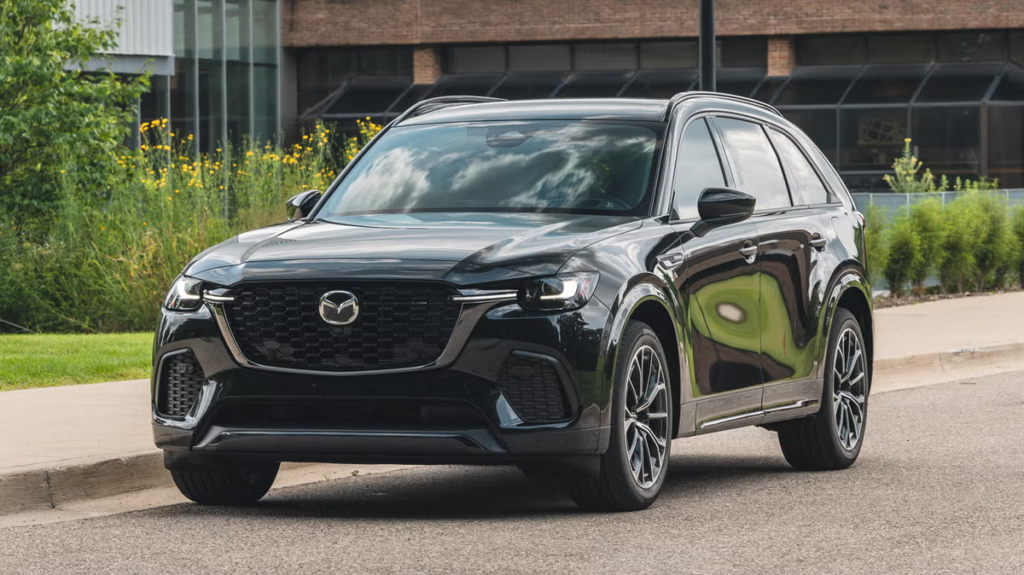
Mazda introduces their new midsize crossover with a longitudinal engine layout and an inline-six cylinder engine producing 340 horsepower through an advanced eight-speed automatic transmission. The CX-70‘s chassis features a new multi-link rear suspension system with frequency-sensitive dampers that automatically adjust to road conditions without requiring complex electronics. Mazda engineers developed a unique all-wheel drive system that can predictively transfer torque between axles before wheel slip occurs, enhancing both performance and safety. The interior showcases Mazda’s new approach to luxury with hand-stitched leather, real wood trim, and a driver-focused cockpit featuring a 12.3-inch digital instrument cluster.
Mazda CX-70 (Interior)
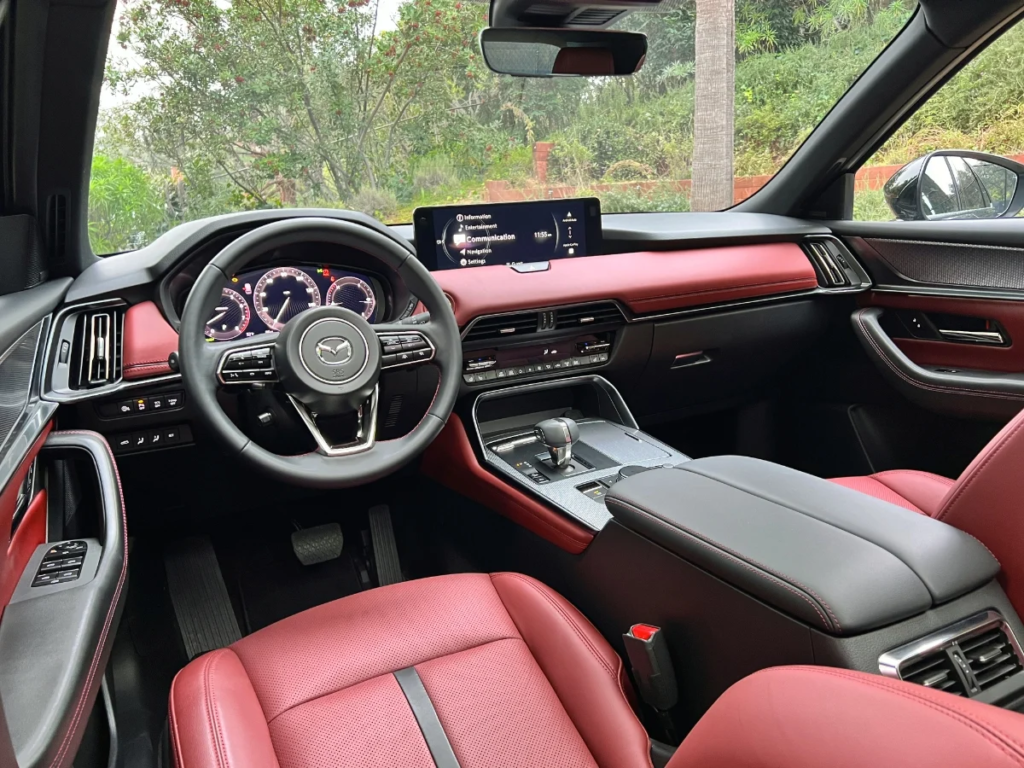
Mazda elevates the CX-70’s interior with a minimalist design philosophy focused on driver engagement. The cockpit features a head-up display with augmented reality navigation and a 12.3-inch digital instrument cluster that changes layout based on driving modes. Mazda’s new natural speech recognition system controls vehicle functions through conversational commands while minimizing physical button interactions. The climate control system uses infrared sensors to maintain individual temperature zones while automatically adjusting for solar heat gain through the windows.
6. Toyota MR2: The Return of a Classic (Exterior)
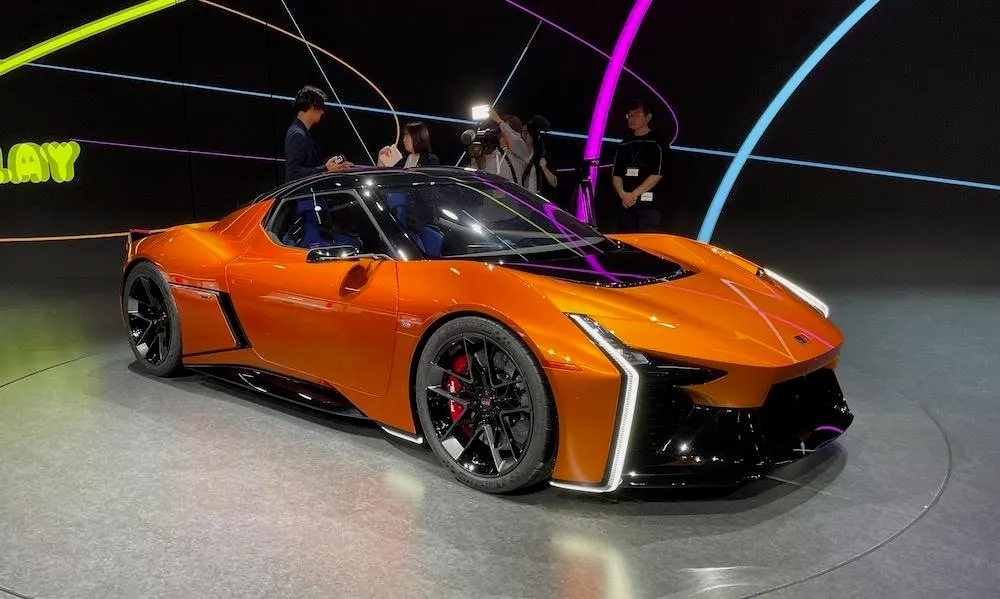
Toyota revives the MR2 nameplate with a mid-engine hybrid sports car combining a turbocharged 1.6-liter three-cylinder engine with an electric motor to produce 395 combined horsepower. The new MR2 weighs just 2,850 pounds thanks to the extensive use of carbon fiber-reinforced plastics and aluminum in its chassis construction. Toyota developed a unique torque vectoring system that uses the electric motor to enhance handling dynamics while providing up to 35 miles of pure electric range. The driver-focused cockpit features heavily bolstered sports seats, a digital instrument cluster with track telemetry capabilities, and Toyota’s next-generation infotainment system.
Toyota MR2 (Interior)
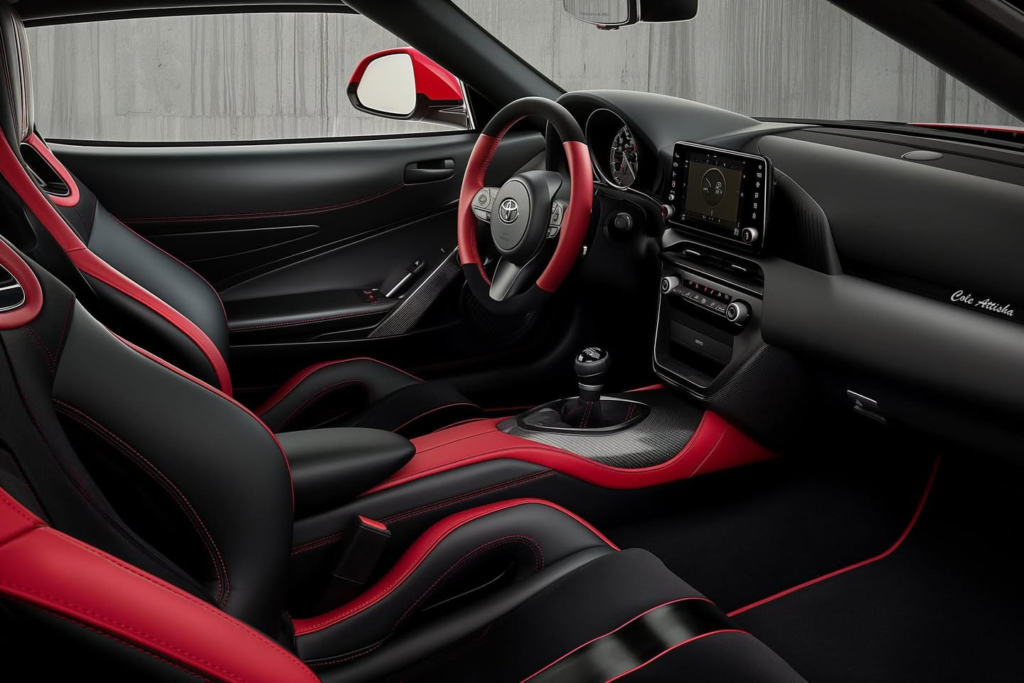
Toyota designed the MR2’s cabin to blend digital technology with classic sports car ergonomics. The driver-focused cockpit features a yoke-style steering wheel with integrated touch controls and a 12.3-inch digital instrument cluster that changes configuration based on drive modes and track settings. Toyota developed special lightweight carbon fiber seats with inflatable bolsters that automatically adjust during high-performance driving to provide optimal support. The minimalist center console includes a compact 10.1-inch touchscreen mounted high for easy visibility, while physical controls remain for critical functions like climate and audio settings.
5. Hyundai Ioniq 7: A Futuristic SUV (Exterior)
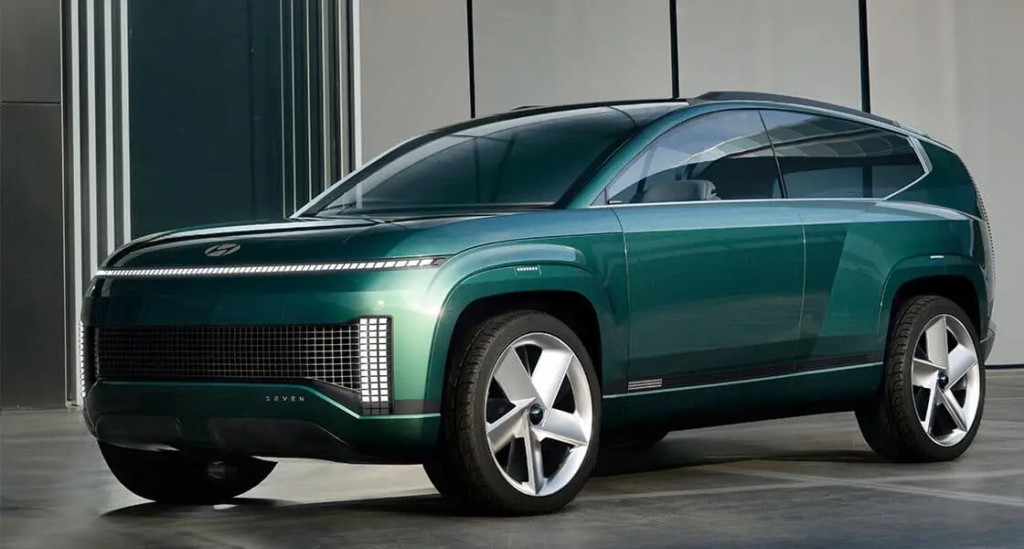
The Ioniq 7 showcases Hyundai’s advanced E-GMP platform with dual motors producing 500 horsepower and featuring a 350kW charging system enabling 10-80% charging in just 18 minutes. Hyundai developed a new interior concept with reconfigurable seating that can transform into a lounge-like space when using autonomous driving features. The advanced air purification system uses UV-C light and HEPA filtration to maintain hospital-grade air quality inside the cabin. The Ioniq 7’s exterior features active aerodynamic elements that automatically adjust to optimize efficiency or cooling based on driving conditions.
Hyundai Ioniq 7 (Interior)
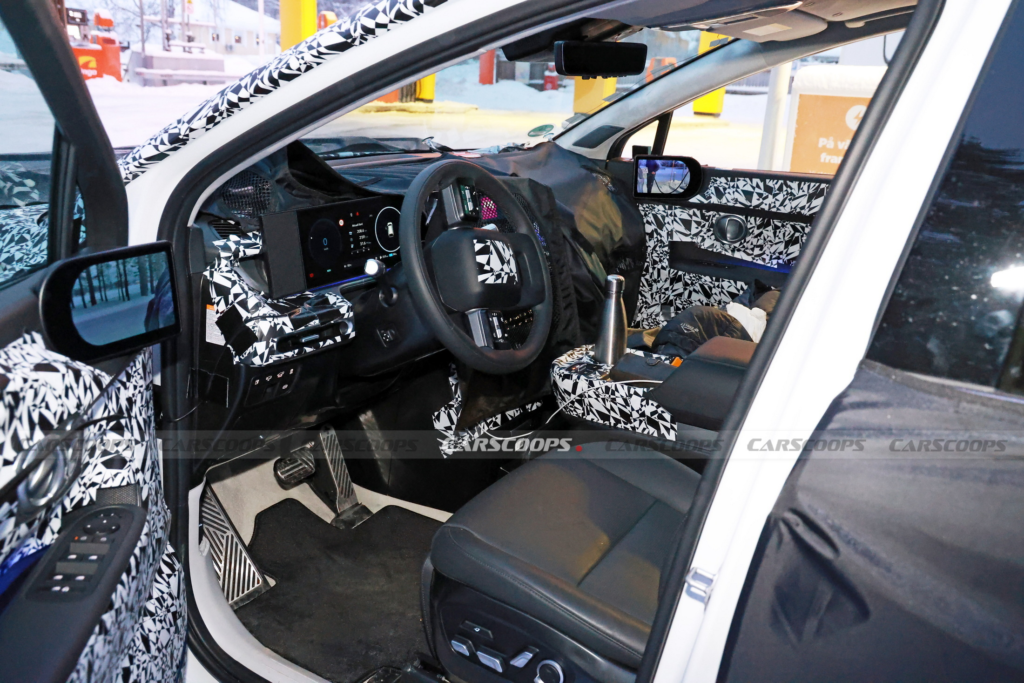
Hyundai creates a living room-like atmosphere in the Ioniq 7 with swivel front seats and a flat floor design enabled by the electric platform architecture. The innovative air conditioning system uses micro-perforated panels throughout the cabin instead of traditional vents, creating a more natural and draft-free climate control experience. Hyundai’s new Universal Island console slides forward and backward electronically, featuring wireless charging for multiple devices and an integrated refrigerated compartment. The panoramic display system combines three seamless screens across the dashboard, offering customizable layouts for different driving scenarios and entertainment options.
4. Ram 1500 Ramcharger: A Powerful Hybrid (Exterior)
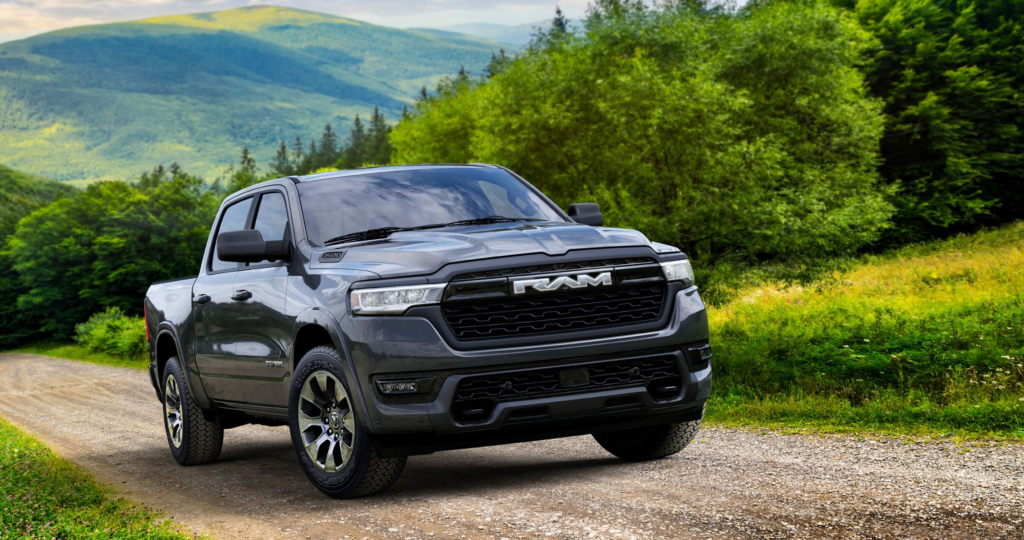
Ram is making an interesting move in the full-size pickup segment with a plug-in hybrid powertrain that combines a 3.0-liter turbocharged inline-six with electric motors to produce 675 combined horsepower and 850 lb-ft of torque. The Ramcharger can travel 45 miles on pure electric power while maintaining a 12,000-pound towing capacity through innovative battery and thermal management systems. Ram engineers developed a new air suspension system that automatically levels the truck based on payload and driving conditions while providing multiple ride height settings. The interior features a 14.5-inch portrait touchscreen with specific displays for hybrid system monitoring and advanced towing assistance features.
Ram 1500 Ramcharger (Interior)
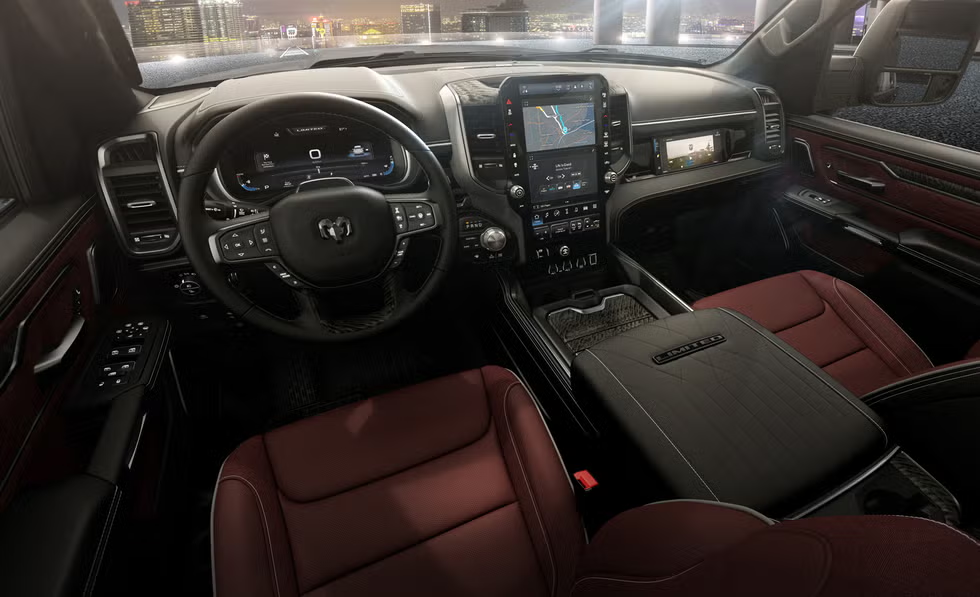
The truck’s interior design uses a floating center console with a power-sliding organization system and integrated wireless charging for multiple devices. The new UConnect 7 system features a 14.5-inch portrait touchscreen with specific displays for hybrid power management, payload monitoring, and advanced trailering assistance. Ram developed unique “work-ready” surfaces throughout the cabin that resist scratches and stains while maintaining a premium appearance. The configurable digital instrument cluster includes specialized screens for efficiency coaching and power distribution visualization.
3. Chevrolet Suburban: Upgraded for 2025 (Exterior)
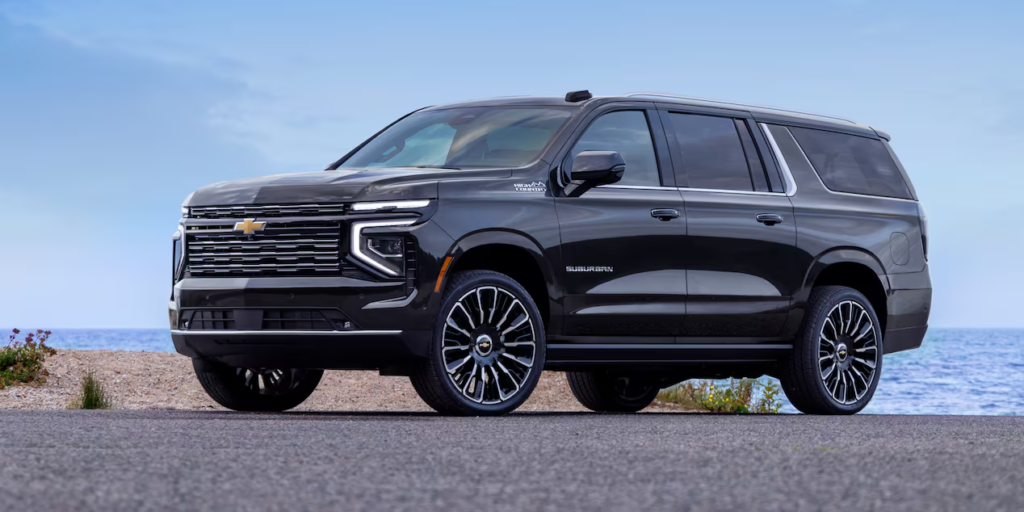
The updated Suburban introduces Chevrolet’s next-generation 6.2-liter V8 engine featuring Dynamic Fuel Management technology that can activate any combination of cylinders for optimal efficiency while producing 440 horsepower. Chevrolet engineers developed a new magnetic ride control system working in conjunction with air springs to provide both exceptional ride comfort and improved handling dynamics across all road conditions. The Suburban’s interior receives a comprehensive upgrade with a configurable 15-inch head-up display, augmented reality navigation, and a new rear-seat entertainment system featuring individual 12.6-inch displays with gaming capabilities. Super Cruise adds the ability to automatically change lanes and navigate interchanges while towing, making long-distance family trips more comfortable and secure.
Chevrolet Suburban (Interior)
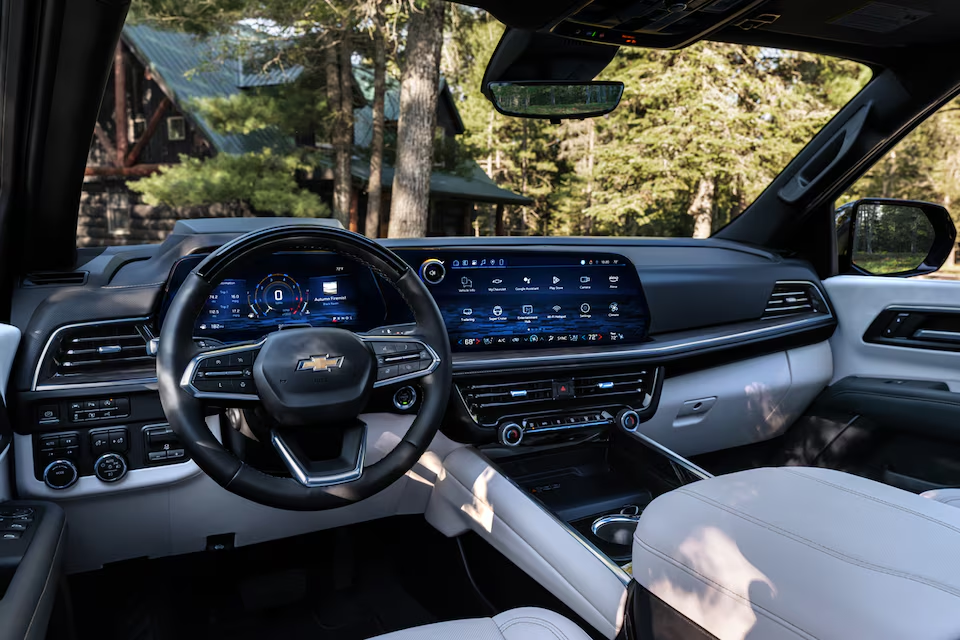
Chevrolet has designed the Suburban’s interior by focusing on family-friendly technology and comfort features. The new digital cockpit combines a 12.3-inch instrument cluster with a 15-inch central touchscreen, featuring enhanced real-time navigation and vehicle dynamics displays. Chevrolet engineers developed a conversation enhancement system that uses microphones and speakers to facilitate natural communication between all three rows of seating. The climate control system introduces individual humidity control for each zone, while new acoustic materials create a whisper-quiet cabin environment.
2. Porsche Taycan: Performance Enhancements (Exterior)
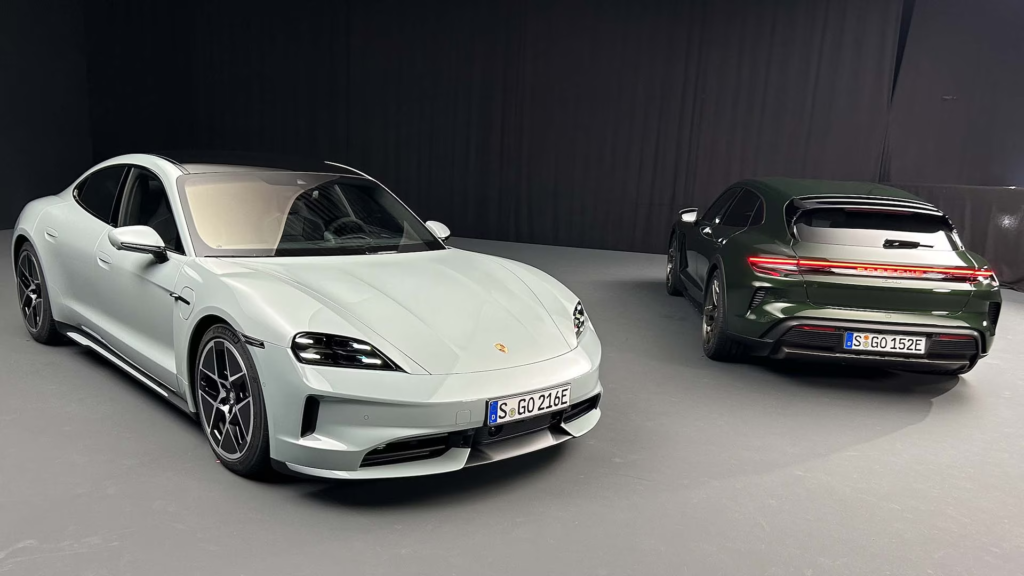
Porsche upgrades the Taycan with next-generation electric motors producing 750 horsepower in the Turbo S variant, while a new 800-volt battery architecture enables charging rates up to 350kW. The enhanced Taycan features a revolutionary active aerodynamic system with multiple movable elements that automatically adjust based on speed, weather conditions, and battery temperature management needs. Porsche developed a new torque vectoring system that can instantly adjust power delivery to individual wheels up to 1,000 times per second, providing unprecedented handling precision and stability. The interior showcases Porsche’s latest PCM 7.0 infotainment system with advanced voice control, gesture recognition, and a new track analysis suite that provides professional-level telemetry data.
Porsche Taycan (Interior)
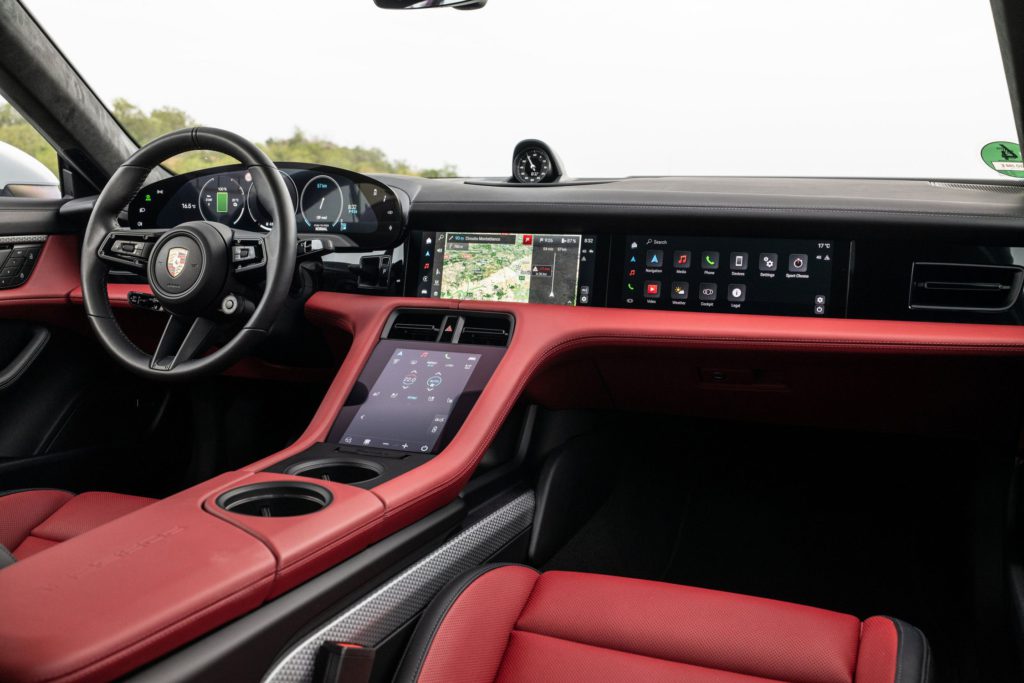
The Taycan’s interior uses an advanced digital ecosystem centered around the driver. The curved instrument cluster now features eye-tracking technology that automatically adjusts display content based on driver focus. Porsche’s new Race Coach system provides real-time driving instruction through augmented reality displays and haptic feedback through the steering wheel and seats. The center console incorporates a three-dimensional holographic display for climate and vehicle controls while maintaining Porsche’s traditional analog chronometer.
1. Chevy Corvette SUV: A Bold New Direction (Exterior)
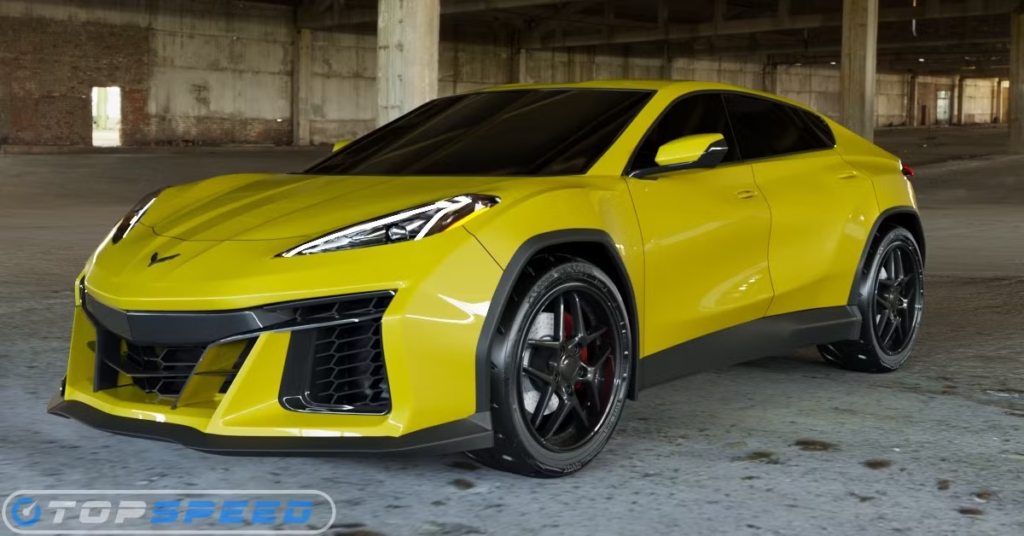
Chevrolet expands the Corvette lineup with a high-performance electric SUV featuring three motors producing a combined 1,000 horsepower and achieving 0-60 mph in under 3 seconds. The Corvette SUV maintains sports car dynamics through an advanced air suspension system with active anti-roll bars and four-wheel steering, providing handling characteristics that echo its two-door sibling. Engineers developed a unique battery thermal management system that enables repeated high-performance driving without power reduction, while 800-volt architecture allows for charging from 10% to 80% in just 20 minutes. The interior combines Corvette’s driver-focused design philosophy with SUV practicality, featuring heavily bolstered sport seats, a flat-bottom steering wheel with customizable controls, and a 16-inch curved digital instrument cluster displaying performance data in real-time.
Chevy Corvette SUV (Interior)
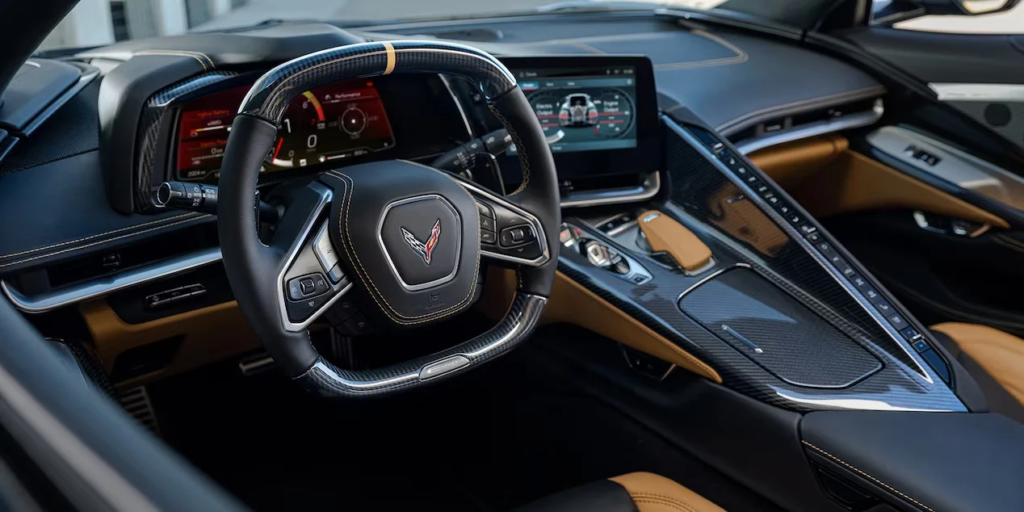
Chevrolet is creating a driver-focused cockpit that echoes traditional Corvette design while adding SUV practicality. The wraparound digital dashboard features a configurable head-up display and augmented reality navigation system that projects directional arrows onto the actual road ahead. Chevrolet developed special performance seats with carbon fiber shells and adjustable pneumatic bolsters that automatically tighten during high-g cornering. The fighter jet-inspired steering wheel includes customizable haptic feedback zones that communicate vehicle dynamics information directly to the driver’s hands.




























